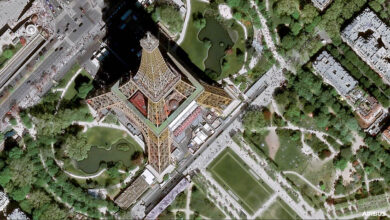Aditya L1 reaches its destination
India's First Space-Based Solar Mission Reaches Destination after a Challenging Voyage of 127 Days
By R. Anil Kumar
- During its journey, Aditya-L1 traversed challenging paths, trajectories, and terrains, including overcoming Earth’s gravitational sphere of influence.
- The final destination of the Indian Space Research Organisation’s maiden solar mission is the Sun-Earth Lagrange Point 1 (L1), which is at a distance of 1.5 million kilometres, from the Earth.

Bangalore, January 6: India creates yet another landmark – Aditya-L1, India’s first space-based solar observatory to study the Sun, has reached its destination after a challenging voyage of 127 days. Prime Minister Narendra Modi announced on X (formerly Twitter) that Aditya-L1 has reached its destination, marking another landmark for India. During its journey, Aditya-L1 traversed challenging paths, trajectories, and terrains, including overcoming Earth’s gravitational sphere of influence.
The final destination of the Indian Space Research Organisation’s maiden solar mission is the Sun-Earth Lagrange Point 1 (L1). It is a strategic location in space which will provide Aditya-L1 an uninterrupted view of the Sun for the entirety of its mission duration, which is five years.
This is because at L1, no occultations occur. In other words, no celestial body will block the view of the Sun for Aditya-L1.
Prime Minister Narendra Modi wrote on X that Aditya-L1 reaching its destination is a testament to the relentless dedication by Indian scientists towards achieving a complex and intricate space mission.
India creates yet another landmark. India’s first solar observatory Aditya-L1 reaches it’s destination. It is a testament to the relentless dedication of our scientists in realising among the most complex and intricate space missions. I join the nation in applauding this…
— Narendra Modi (@narendramodi) January 6, 2024
An interesting fact is that Aditya-L1’s primary payload, the Visible Emission Line Coronagraph (VELC), is designed as a reflective coronagraph, which means that it will block the Sun’s light in a way such that only the corona is visible.

Also, at L1, the gravitational forces exerted by the Sun and the Earth on Aditya-L1 will balance the centripetal force required by the spacecraft to keep moving around the location, in the vicinity of the Sun and Earth.
Since the forces will be balanced at L1, Aditya-L1 will be in an equilibrium state and a stable position, and will simply hover in the halo orbit without spending much fuel.
The distance between the Sun and the Earth is about 150 million kilometres, and that between the Aditya-L1 spacecraft and the Earth will be 1.5 million kilometres. This means that the distance between Aditya-L1 and the Sun will be about 148.5 million kilometres.
The strategic location will also allow Aditya-L1 to view the Sun without coming in contact with the star’s scorching heat, for it will be situated 148.5 million kilometres from the Sun.
Now that Aditya-L1 has reached the Lagrange point, it will not just stop. It will perform a slow and graceful dance around that point.
So far, Aditya-L1 has conducted scientific experiments such as measuring high-energy particles, capturing its first high-energy X-rays from solar flares, measuring energy variations in protons and alpha particles, and capturing full-disk images of the Sun in near-ultraviolet wavelengths.
Aditya-L1 is expected to provide important information about the problem of coronal heating, dynamics of space weather, solar flares, and the propagation of particles and fields in the interplanetary medium.
Aditya-L1’s payloads have been tuned in such a way that they can observe the solar atmosphere, especially the chromosphere and the corona, and can conduct experiments to understand the local environment at L1.





